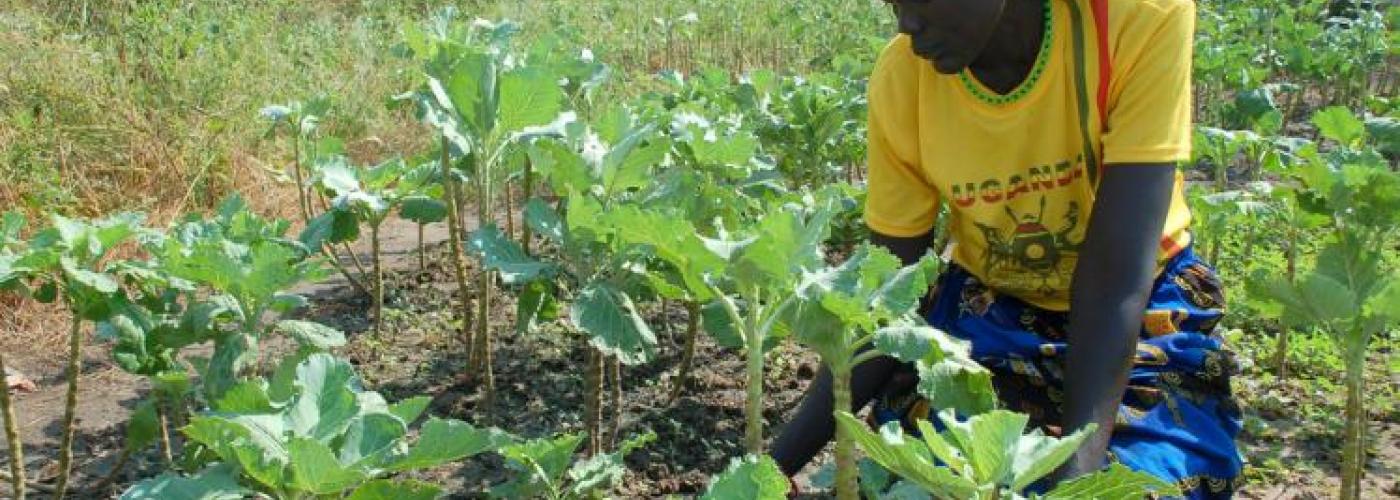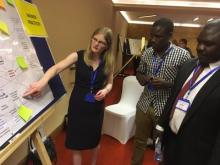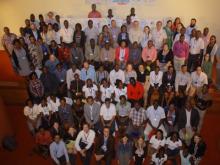New Approaches to Measuring Market Dynamics in Uganda
Image

This post was written by Jarrod Goentzel, Courtney Blair, and Erica Gralla and is part of a collaboration with Agrilinks for "Markets Month."
What impact does a voucher program for quality seed have on upstream imports of fertilizer by wholesalers? How are the profit margins of local traders impacted when farmer cooperatives are trained in collective marketing? When youth in one sub-county are trained in the provision of agrochemical spraying services, how many youth in neighboring sub-counties can be expected to adopt the business model for themselves?
When engaging in market facilitation activities, these kinds of questions are vital to understanding the impact of an intervention as well as difficult to answer using traditional monitoring and evaluation techniques. Agricultural markets are complex systems, and one of the major challenges of market facilitation projects is in finding new and innovative approaches to measuring progress and assessing the impact of activities.
The USAID/Uganda team is leading the way in developing these new approaches to monitoring, evaluation and learning. One example is the USAID/Uganda Feed the Future Market System Monitoring Activity, led by the Humanitarian Response Lab at the Massachusetts Institute of Technology in partnership with The George Washington University. The Activity draws on insights from systems engineering and supply chain management to develop models and techniques that can be used to assess the impact of market facilitation activities across the USAID/Uganda Feed the Future Value Chain project portfolio. This complements the monitoring and evaluation efforts of the other USAID/Uganda Feed the Future activities by introducing methods to assess how the combination of activities in the project portfolio is enabling systemic change in markets. A brief overview is available here.
One of the major outputs of the Market System Monitoring Activity is a detailed map of the agricultural market system in Uganda, characterizing the dynamics of the market and various stakeholders’ roles in shaping it. System mapping is a useful way to represent complex interactions among market actors and to identify the conditions and relationships that must be in place in order to encourage desired changes in behaviors. For market facilitation activities in particular, creating a system map also helps to visually represent the connections between interventions and potential pathways for synergies and/or unintended consequences. The map is designed to be flexible and dynamic. It is continually being updated by academics and researchers to reflect both input from stakeholders and deep-dive studies of individual components of the system. The team is also developing a suite of indicators that can be used to identify sentinel changes in the market. Indicators will also contribute to the development of system dynamics models that can be used to design market facilitation initiatives.
Version 2.0 of the Uganda market system map has just been released and is available at the following page along with detailed documentation explaining the content of the map and how to apply the mapping approach in other countries and contexts. A brief overview of the team’s mapping approach is also outlined there.

Photo: Professor Erica Gralla of The George Washington University explains the mapping approach to workshop participants.
As part of the process for refining Version 2.0 of the Uganda agricultural market system map, the Market System Monitoring Activity co-organized a three-day Agricultural Market Systems Workshop in March 2017. The event was designed to be a hands-on introduction to both market system facilitation and the system mapping approach, and participants were encouraged to consider the ways their work is connected to and impacted by interventions in other areas of the market system. More than 150 representatives from USAID partners and stakeholders participated, including ministry officials and members of the private sector. The event featured remarks from USAID/Uganda Mission Director Mark Meassick and the Minister of Agriculture, Animal Industry and Fisheries, the Honorable Vincent Bamulangaki Ssempijja. The participants contributed their perspectives and expertise to help refine the agricultural market system map and developed a pipeline of actionable opportunities to address some of the challenges and synergies that were identified. Several organizations and institutions that attended have followed up to request more information about the mapping approach, and the outputs from the event are being used to inform the evolution of USAID’s project programming in Uganda. The event report, which we are pleased to release to a broader audience, includes details on the priority intervention areas that were identified by participants and the pipeline of opportunities that were generated. The report is available here.

Photo: Attendees at the Agricultural Market Systems Workshop.
The Market System Monitoring Activity team is eager to share our approach with other Activities and Missions and welcomes questions and feedback. We can be reached at msm.uganda@mit.edu.


